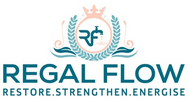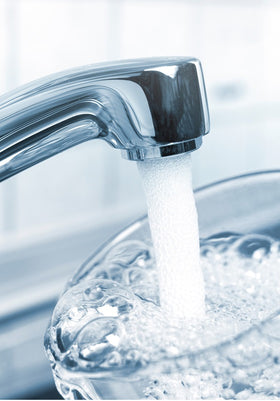
Reverse Osmosis: The Ultimate Guide to Water Purification
Ever wondered how tap water turns into crystal-clear magic? Short answer: reverse osmosis pushes water through a super-fine membrane, ditching all the nasties. 💧 Reverse Osmosis: The Ultimate Guide to Water Purification spills the secrets—science, steps, and smart tips—so your water (and your brain) gets a refresh!
Understanding Reverse Osmosis
Definition and Principles
Imagine if only the purest water molecules were allowed past a velvet rope, like a bouncer at an exclusive nightclub. That’s pretty much what reverse osmosis (RO) does. Using pressure, it pushes water through a semi-permeable membrane, leaving behind the riff-raff—things like salt, lead, bacteria, and other unwanted guests. What you get is clean, fresh water on the other side. It flips nature’s own process—osmosis—on its head. Instead of water moving naturally to balance things out, we give it a helpful shove in the opposite direction.
Historical Development
You might think RO is a modern marvel, but its roots go back to the 1950s. Back then, scientists were scrambling for ways to turn seawater into drinkable water. What started as a high-tech lab experiment quickly caught the world’s attention. It wasn’t long before engineers saw the potential for homes and businesses. Now, it’s tucked neatly under British kitchen sinks—far from its experimental beginnings, but more essential than ever.
The Reverse Osmosis Process
Osmosis vs. Reverse Osmosis
Let’s start with something simple: soak a raisin in water. It puffs up, right? That’s osmosis—water naturally moves to where there’s less of it to even things out. Now reverse that. With RO, we apply pressure to move water the wrong way—forcing it through a filter so fine, it stops even tiny contaminants from tagging along. It’s like squeezing tap water through an invisible sieve that only lets clean water molecules pass through. Everything else gets left behind.
Components of an RO System
Think of an RO system as a little water-purifying team working behind the scenes:
-
Sediment Filter – Grabs grit, sand, and rust before they cause trouble.
-
Carbon Filter – Kicks out chlorine and funky odours.
-
RO Membrane – The real MVP. Filters out dissolved salts and heavy metals.
-
Storage Tank – Holds the purified water until you need it.
-
Post Filter – One last polish for great-tasting water.
-
Optional Add-ons – UV sterilisers zap bacteria, while remineralisation filters bring back the good stuff like calcium and magnesium.
Step-by-Step Process
Here’s how the magic happens, step by step:
-
Pre-Filtration: Water flows through sediment and carbon filters to remove big bits and chlorine.
-
Pressure Boost: A pump adds pressure to drive the process.
-
Membrane Action: Water is pushed through the membrane—impurities stay behind.
-
Storage: The clean water goes into a tank ready for use.
-
Post-Treatment: Before it hits your glass, the water gets a final taste tweak.
And the waste? That’s flushed away—literally. Older systems might waste a litre for every litre of purified water, but newer models are a lot more efficient.
Applications of Reverse Osmosis
Residential Uses
In British homes, RO systems are a quiet revolution. They fit under the sink and quietly deliver clean, tasty water on tap. If you live in a hard water area, they’re a game-changer. No more kettle limescale, no more chalky taste. And if you’re trying to kick the bottled water habit? This is your eco-friendly upgrade.
Industrial Applications
Factories and industries take RO to the next level. Whether it’s pharmaceuticals, food production, or electronics, they all need ultra-pure water to keep things running smoothly. Imagine making medicine or microchips—impure water just won’t cut it.
Desalination Efforts
Reverse osmosis is the unsung hero of global desalination efforts. Picture coastal regions with endless seawater and no clean supply—that’s where RO steps in. It’s already making waves in the Middle East, Australia, and even parts of southern England where water scarcity is an issue. As climate pressures grow, so does its importance.
Advantages and Limitations
Benefits of RO Systems
Why do so many swear by RO? Here's why:
-
Top-Tier Filtration – Removes up to 99% of common contaminants.
-
Better Taste – No more weird smells or aftertastes.
-
Eco-Friendly – Cuts down on plastic bottles and delivery miles.
-
Low Maintenance – Swap out a few filters every 6 to 12 months and you’re good to go.
Challenges and Considerations
No system is perfect—RO has a few quirks to consider:
-
Water Waste – Older systems can be a bit thirsty, wasting water in the process.
-
Initial Cost – Between buying the unit and fitting it, it’s an investment.
-
Mineral Stripping – It removes both the bad and some of the good—but remineralising filters can help.
-
Pressure Needs – Low household water pressure? You might need a pump to keep things flowing.
Conclusion, Summary and Future Outlook
RO systems have quietly reshaped how we access safe drinking water. From turning salty seas into drinkable supplies to tackling dodgy tap water, they’ve become the unsung heroes of modern hydration. As tech evolves, these systems are getting even cleverer—longer-lasting membranes, better efficiency, and smart features that give you a nudge when filters need changing. In the future, expect RO to play an even bigger role—especially as water becomes a hotter topic across the globe.
So whether you're making a cuppa, blending a smoothie, or just filling your bottle before a walk, RO is working behind the scenes—keeping your water clean, clear, and ready for whatever’s next.
More Reverse Osmosis info we think you'll love
Reverse Osmosis Advantages and Disadvantages
Reverse Osmosis in Wastewater Treatment
Reverse Osmosis vs Bottled Water
Reverse Osmosis vs Water Softener
Reverse Osmosis vs Alkaline Water
Can Reverse Osmosis Remove Fluoride?
Is Reverse Osmosis Water Safe to Drink?



Leave a comment